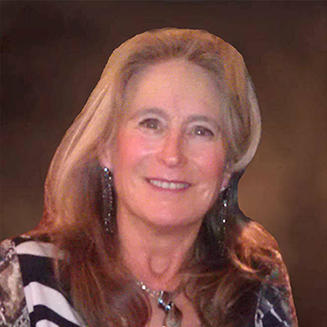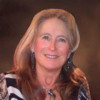 Technical writer and author of "Don't Try This at Home: The Silent Epidemic of Attachment Disorder." Website: AttachmentDisorderHealing.com Survived a 30-year career in fast lanes of New York and Washington; loves brain science, wants to alert people to prevalence of childhood attachment wounds
Technical writer and author of "Don't Try This at Home: The Silent Epidemic of Attachment Disorder." Website: AttachmentDisorderHealing.com Survived a 30-year career in fast lanes of New York and Washington; loves brain science, wants to alert people to prevalence of childhood attachment wounds
1) What personal or professional moment in your life inspired you to work on ACEs?
For 30 years in the fast lanes of New York and Washington DC, I was flying around the world instead of having children. Suddenly in 2007, I faced divorce from a 27-year marriage, bankruptcy, then the death of both parents and two bad rebound affairs. After six life disasters in two years, my entire personality structure crumbled and I found out there was little underneath but a lot of terrifying childhood experiences. By 2009, I saw the problem lay inside me, so I stopped everything I was doing cold, and went back to heal from my childhood. But I felt like an oddity, if not a freak.
In 2013 I finally heard about the ACE Study, and found out how pervasive this is.
2) What do you do?
I'm on sabbatical, writing a book now on how even the most high-functioning of us can have severe childhood trauma, yet be totally unaware of it [www.AttachmentDisorderHealing.com/book] . ACEs are far more pervasive in U.S. leadership -- corporations, government, medicine, etc. -- than any of us know. Especially developmental trauma from conception to age 3, which is 99% pre-concious. That's why so few want to talk about it.
3) How have you used ACEs in your work or life? Has it changed what you do?
Now that I’m writing about developmental trauma and ACEs, I don’t spend most of my day with dissociated “high-performers” in denial. Awareness of ACEs has changed my life so that now instead, I daily encounter trauma sufferers, and my own trauma memories surfacing. My way to walk through it is to be fully Present with people, their suffering, and above all, with my own emotions.
But no "feeling other people's feelings" or co-dependent trying to"fix" them.
Instead: just BE with them, period. Just really be Present.
"Trauma is a fact of life," says Dr. Peter A. Levine, "but it doesn't have to be a life sentence."
I don't resist other people's trauma, or my own - that puts me in freeze (dissociation) -- and nothing is more painful emotionally and physically than dissociation.
I try to practice Tara Brach's "Radical Acceptance." I try to feel the suffering in real time, and "let it be as big as it is." So at the end of the day, hopefully I won't need to freeze it (repress).
4) If you encounter trauma often in work, and in life, what coping skills do you find useful?
To handle being really Present with trauma, without drowning in it:
1. I work at what Dan Siegel calls “dyadic conciousness” = support. I see or call a “Safe Person,” who'll accept me when I share my real feelings - every single day. If I’m not sharing with a real human being, I’m repressing and that’s not good.
2. When I need to mourn my own losses, I sit and put in the time. When I get blocked up or the pain is huge, I use EFT tapping [www.thetappingsolution.com/#how-to-do-eft-tapping]
3. I regularly meditate, especially Metta = self-compassion meditation [www.self-compassion.org/].
4. I do Bruce Perry's "rhythmic regulation." I schedule 45 minutes physical exercise every day, alternating cardio with a hard stint at gym weights. If too tired, a long walk also works.
But the key is: use exercise time deliberately -- to work out trauma. It’s great if I can work out or walk with a friend and talk feelings out at the same time. But if not, then:
I always use music when exercising; I keep an mp3 player with a wide selection around at all times. Before starting, I “poll” my feelings, try to figure out what the heck I’m feeling (that’s the tough part). So when I start moving, I can focus my movements “against” the trauma, to release it.
If I have no idea what’s bugging me, Rick Hanson says, “check in every am with your survival brain (brain stem), emotional brain (limbic), and thinking brain (frontal); they all have different needs.” So before working out, I’ll poll my 3 brains: “OK Ladies, what music do we want to hear?” Some piece of music pops up that often ends up expressing my hidden feeling.
A lot of singing and hard dancing also goes on, and works a lot of stuff out. If you sing and can find a regular local choir practice each week, that is a great idea.




Comments (6)